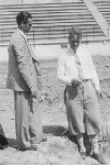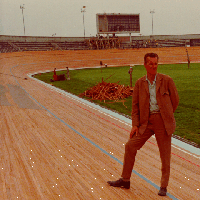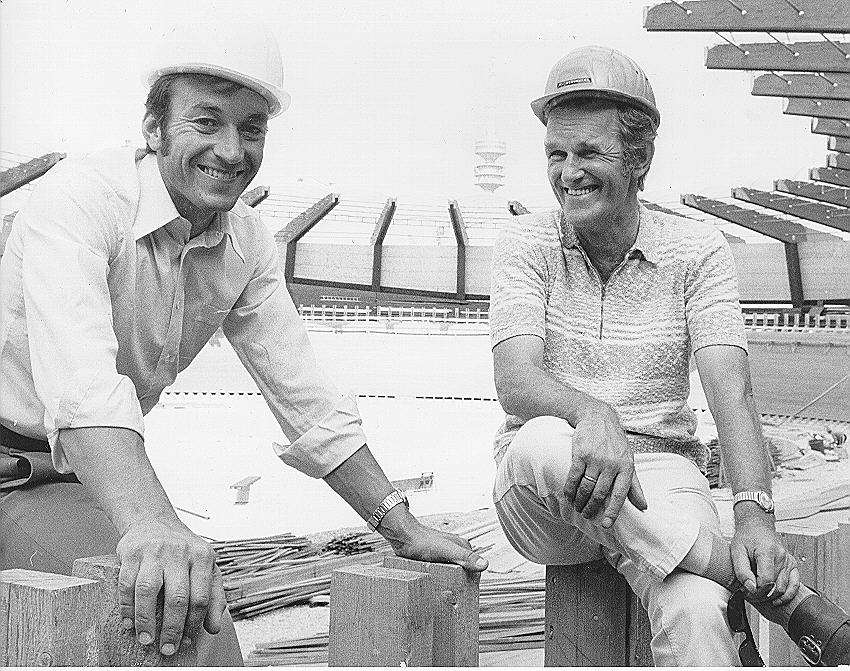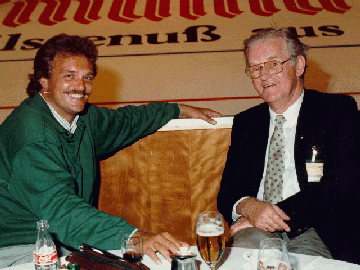
As a young architect he started to build houses in his very much destroyed home town.
But of course he did not loose the contact to the cycling scene and when his father Clemens suffered a stroke, he joined his father's architect office in order to continue the tradition.
Until his father died, Herbert worked together with him on several tracks and learned all about tracks in praxis and in theory.


